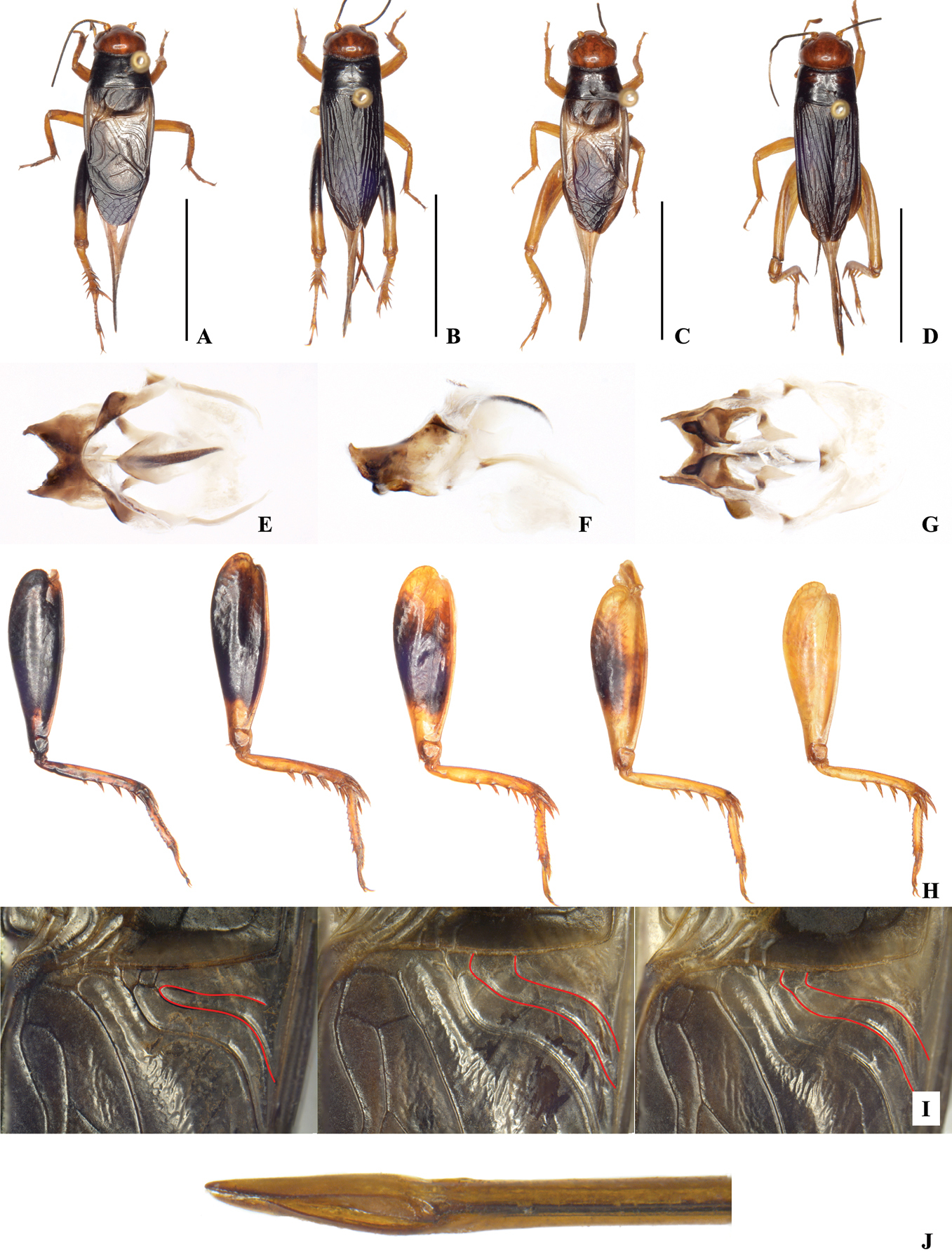
|
||
|
Phonarellus minor (Chopard, 1959) (A–J) A–D bodies of P. minor (A, C males B, D females; scale bar: 10mm A, B specimens with dark colored hind legs C, D specimens with light-colored hind legs) E–G genitalia (E dorsally viewed F laterally viewed G ventrally viewed) H color variation of hind legs from dark to light I variable intervals at the base of oblique veins (Note: The red line point to the first and second oblique veins. The distance between the two veins in the rightmost figure is the smallest (see Fig. 6, i.e., less than 0.6 mm), and the sampled individual has black hind legs (see Fig. 7, i.e., the percentage of black is higher than 90%); the distance between the two veins in the middle figure is the largest (see Fig. 6, i.e., greater than 1.2 mm), and the sampled individual has miscellaneous colored hind legs (see Fig. 7, i.e., 30%–90% black); the distance between the two veins in the rightmost figure is medium (Fig. 6, i.e. 0.7mm-1mm), and the hind legs of the sampled individuals are light colored (Fig. 7, i.e. the percentage of black is less than 20%). Combining the information in Figs 6, 7, it can be inferred that the change in veins distance does not correlate entirely with the variation in the color of the hind legs) J ovipositor. |